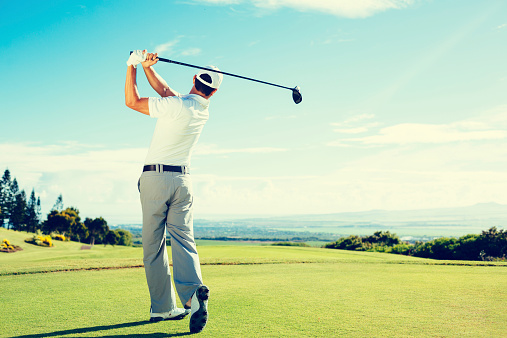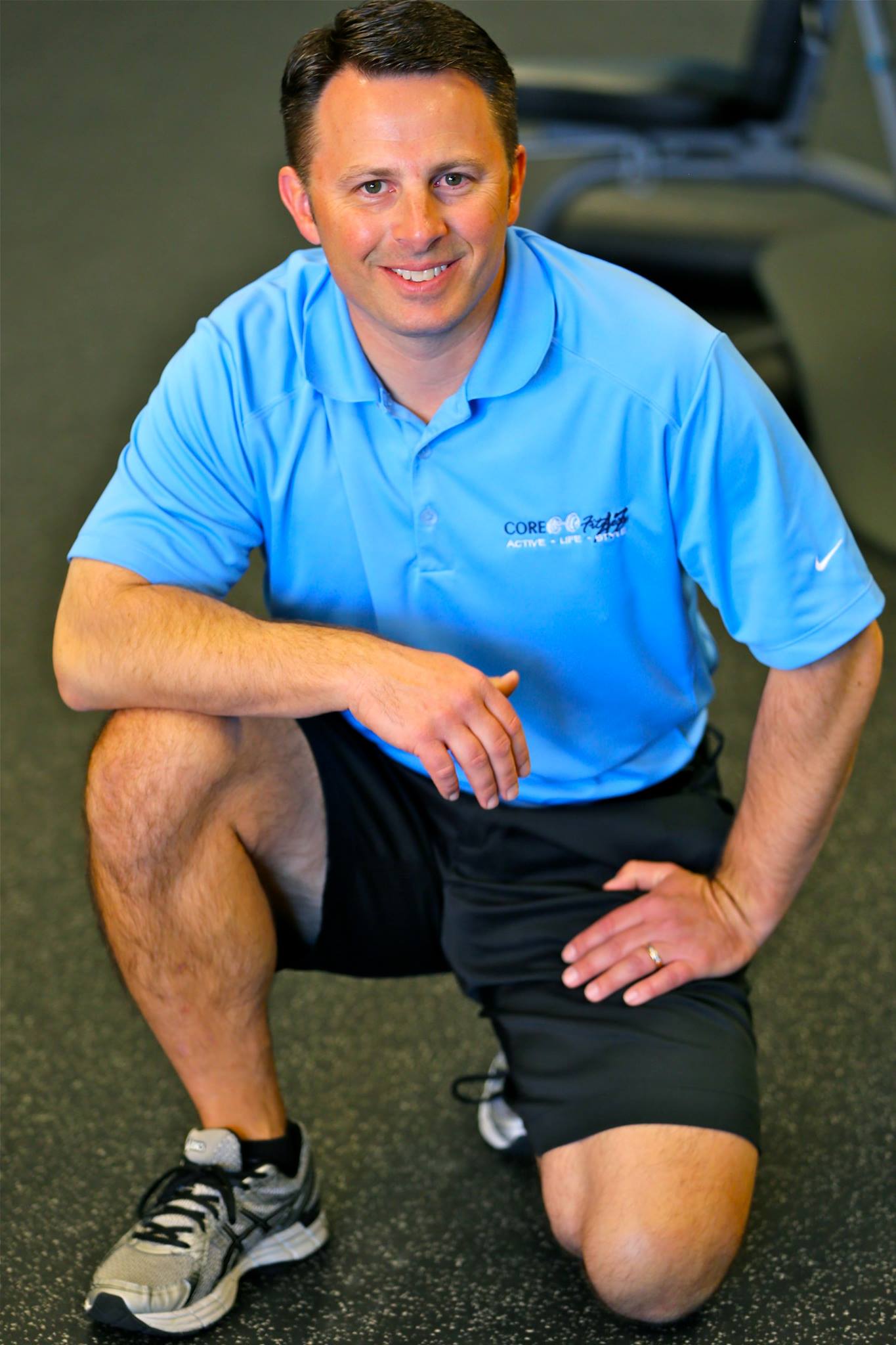
Your hip mobility plays a crucial part in your golf swing. In the back swing the lead leg needs to externally rotate at the hip and the trail leg internally rotates at the hip. During the downswing the hips switch positions with the lead leg going into internal rotation and the trail leg into external rotation. If your hips have insufficient internal and external hip rotation, you will experience swing faults that will ultimately impact the flight of your ball. Hip immobility can contribute to S-Posture, Loss of Posture, Early Extension, Sway, Reverse Spine Angle, and Slide.
One of the methods that we use at Core Fitness AZ to increase the mobility of the hips is myofascial release. You can use many different types of equipment for myofascial release. The most familiar piece of fitness equipment for myofascial release is the foam roller.
In recent studies, foam rolling was proven to improve range of motion without affecting force or power. This means that you can AND SHOULD foam roll PRIOR to your exercise to increase your range of motion without hindering performance. In fact, performance may improve as your ability to move will be enhanced. Myofascial Release is different than static stretching and any stretching should be done AFTER your workout. The benefits are similar but the mechanisms and side-effects are different. Here’s why: As much as 30% of the muscle mass is connective tissue fascia. This tissue allows for three functions: to allow the muscle to slide and change in length, provides a framework for all the fibers, nerves, and blood vessels, and distributes external or internal forces evenly throughout the entire muscle body. Here are some foam rolling techniques that can help you swing better. Please consult a physician before exercising.
Gluteus Maximus/Piriformis
- For the glutes (Figure A), rest your weight your left elbow with the roller above the hipbone. Find the sensitive area and switch sides and compare.
- For the piriformis (Figure B), which is often a sensitive area, sit on the roller and support your body with your left hand on the floor. Cross your left ankle onto the right knee and search for sensitive area. Switch sides and compare.
- Use contact points on the floor to control the amount of pressure.
Back of the Legs (Hamstrings)
- The foam roller should be underneath your legs and you should lift your hips off the ground with your hands placed behind you for stability
- Roll back and forth from the knee up to the glutes
- To make it more intense cross the ankles and focus on the bottom leg
Tops of the Legs (Quads)
- In a plank position place the foam roller underneath the tops of the legs
- Roll back and forth from just above the knee up to the groin
- To make it more intense cross the ankles and focus on the bottom leg
Inner Thigh (Adductors)
- Begin in a face-down position and place the roller parallel to your body.
- Work your way slowly to the upper groin area until you identify the most sensitive area.
Outer Thigh (IT Band and Lateral Quadriceps)
- The outer thigh is highly sensitive. Use caution and ease in.
- From a side-plank position, place your right elbow on the floor and your left hand and left foot on the floor in front of your body. (Note: These are your main contact points to control the amount of weight you rest on the roller.)
- Use contact points on the floor to control the amount of pressure.
- Start above the outside of the knee and slowly maneuver your body over the roller toward your hip.

Cory Schidler is a personal trainer with 20 years of experience and has been sculpting the bodies of North Scottsdale’s elite for over 15 years. He received his Bachelor of Science degree in Exercise Science, from the University of Nebraska and is certified by the American Council on Exercise, as well as Titleist Performance Institute. His clients include physicians, international business owners, busy stay-at-home moms, teenagers and retirees. Cory owns and operates Core Fitness AZ, a personal training studio in North Scottsdale. www.CoreFitnessAZ.com Facebook Twitter
